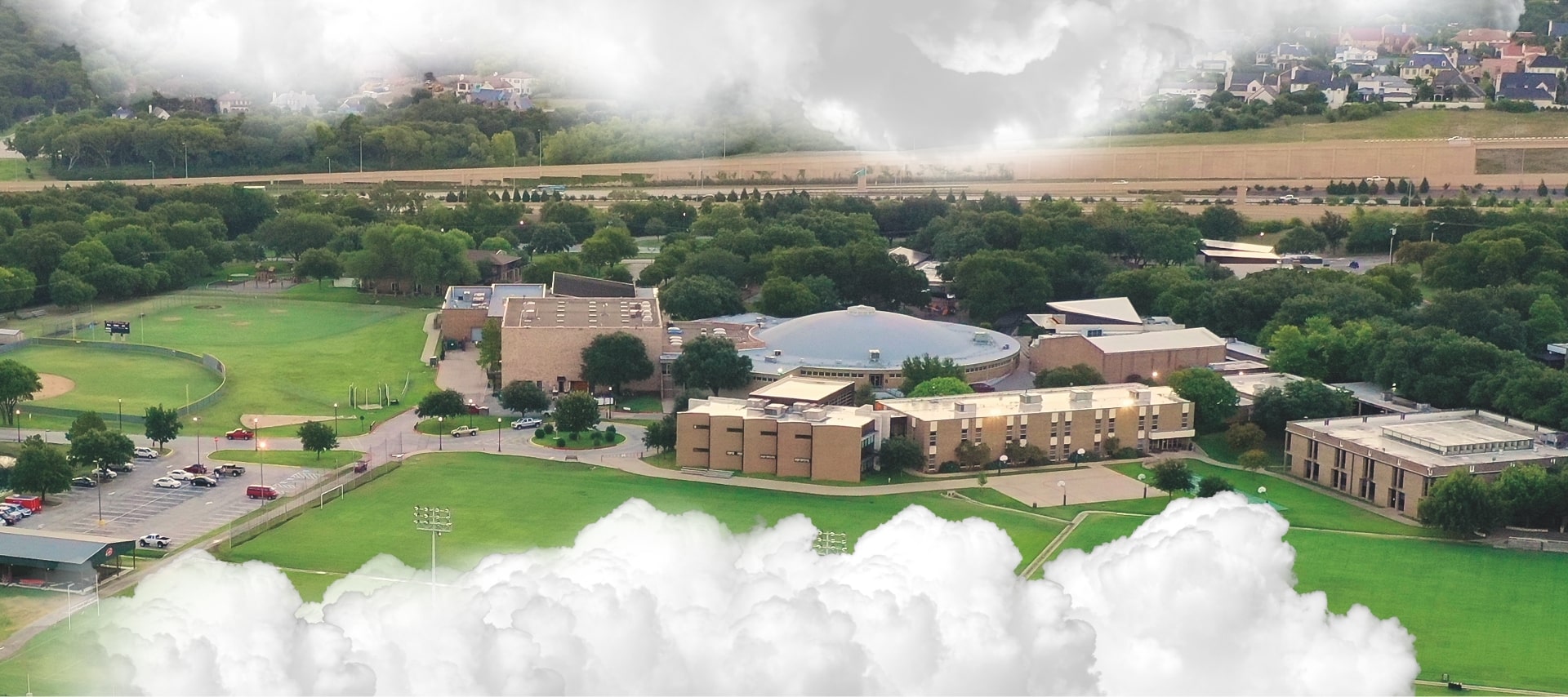Total Eclipse at the School

The city of Fort Worth was at a standstill on Monday, April 8, looking toward the sky to witness a celestial wonder that won’t be seen in the city again for roughly 300 years. Fort Worth Country Day students, faculty and staff gathered on Howard Family Field in Rosacker Stadium from approximately 12:30-2:30 p.m. for a memorable and educational solar eclipse event planned by the School’s Science Department. View the eclipse slideshow.
Dr. Bill Runyon ’80 put April 8, 2024, and the idea of a solar eclipse event into Head of School Eric Lombardi’s head back in April 2016 when he and Runyon were on the eighth grade Big Bend trip, talking about outdoor adventures for students and the often incredible, lifelong impact of those trips. “Dr. Runyon knew the date of this eclipse then, and he knew 4200 Country Day Lane was in the Path of Totality,” Lombardi said.
Lombardi charged Upper School Science Teacher and Science Department Chair Sherri Reed last spring with coming up with something special to commemorate the occasion.
Reed enlisted some suns and moons—seniors Vail Dickey, Carolina Murrin, Blake Brown, and Andrea Andrade—and Upper School Science Teacher Dr. John Cordell to promote the event. Dr. Cordell visited each division to deliver eclipse glasses and share fun facts about eclipses to get everyone excited for the day.
On eclipse afternoon, students were divided into STAR groups (Lower School Families, Middle School Advisories and Upper School Advisories) and moved through four eclipse activity rotations: solar bead bracelet-making, pinhole camera viewing and sun tattoos, mini solar race car driving, and meeting with FWCD’s Solar Car Team to learn more about their experience in the 2023 Solar Car Challenge. These 10-minute rotations kept the younger students occupied and engaged and allowed them to concentrate on activities while safely gazing at the stages of the eclipse with the solar glasses the School provided.
While all the activity was happening on the field, Breakthrough Fort Worth Director of Operations Rudi Flores was emceeing the event, playing sun-themed music from the press box, sharing eclipse facts, and telling “bad” eclipse jokes. Here are some examples: What’s the most famous painting of an eclipse? The Moona Lisa … How do you organize a solar eclipse party? You planet!
Dr. Cordell was responsible for many of Flores' eclipse facts and jokes. His passion for this historic celestial moment was evident as he talked to the students, faculty and staff on the field through the stages. “Pay attention to what happens during the eclipse,” Dr. Cordell said. “You will see the light through the trees. Look for Jupiter and Venus. As darkness falls, animals will be confused. If we are lucky, we will see Baily’s Beads and the Diamond Ring.”
For the two and a half minutes of the total eclipse, all 1,300 students, faculty and staff were lying or standing on the Howard Family Field, gazing at the sky—without glasses—quietly in awe. “You will feel a drop in temperature. Look for stars if we’re lucky. Let your mind be blown,” Dr. Cordell said.
“Sherri and our Science Department knocked it out of the park with their planning. They found ways to make the Solar Eclipse Day a fully JK-12 community event,” Lombardi said. “They gave our older students staffing roles at the four learning stations around the track, keeping our younger students engaged and adding to their understanding of a total eclipse and of solar power in the hour leading up to some of the most remarkable minutes of any school year ever.”








.jpg)
.jpg)
.png)


